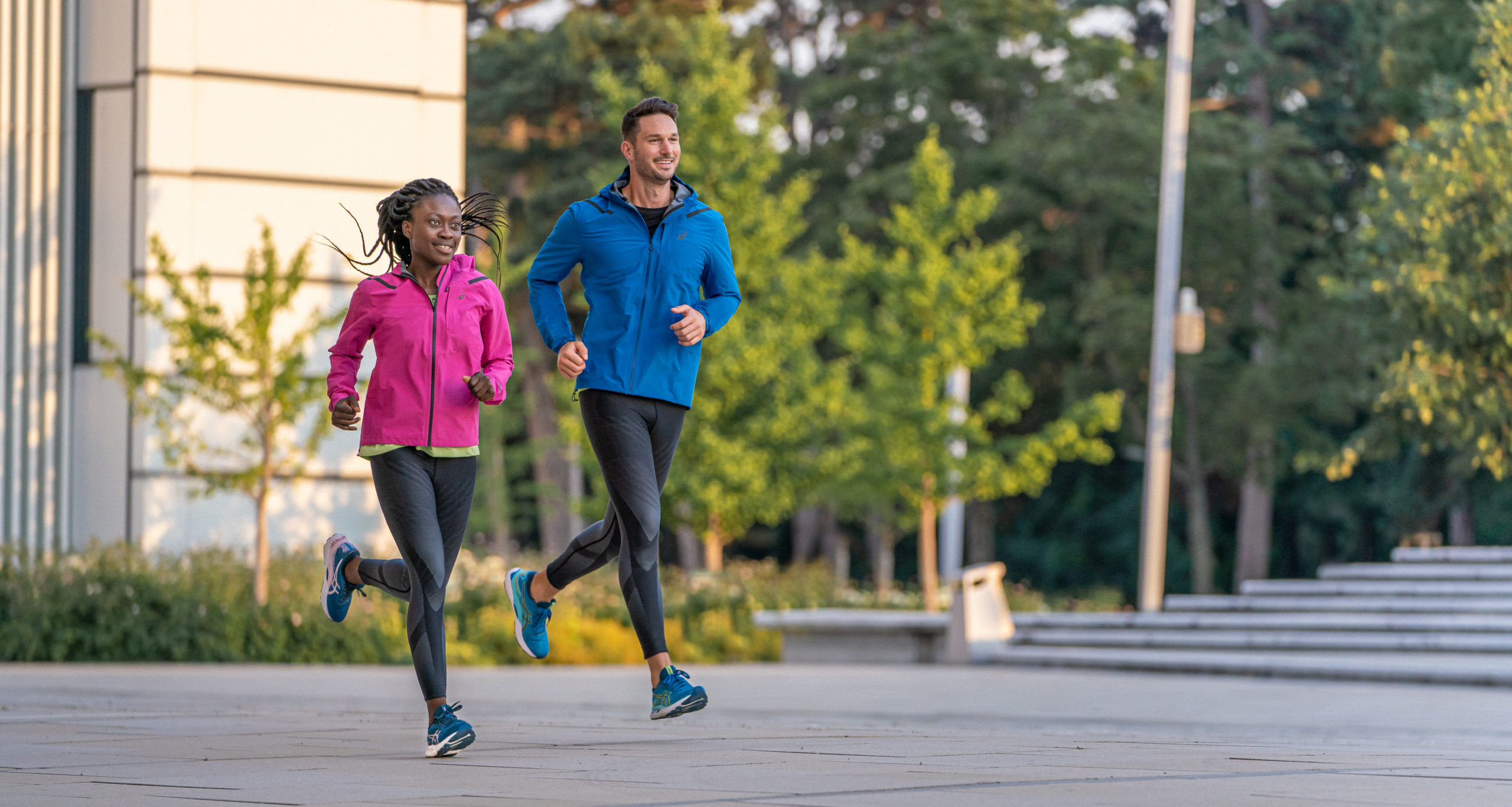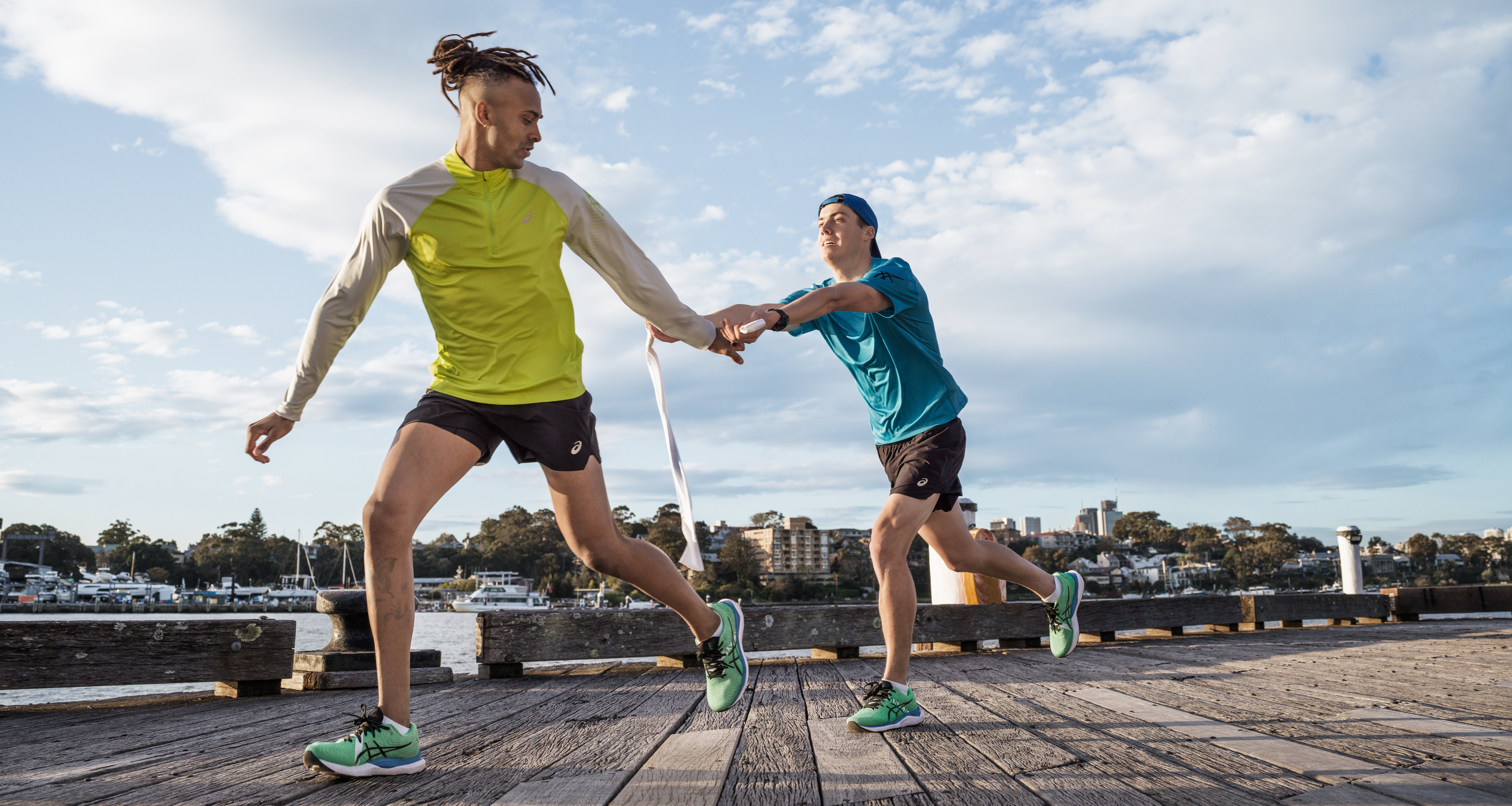Research shows that gratitude can contribute to higher levels of happiness, satisfaction, and other positive emotions. As a clinical psychologist, Dr. Justin Ross will tell you running may be a mental health gamechanger. Lucky for us, gratitude is a concept we can easily integrate into our runs without having to uproot our tried-and-true routines.
What is a gratitude run?
“Gratitude runs” have become increasingly popular over the past few years, namely because gratitude itself has gained recognition as an effective mental health practice. Going on a gratitude run is relatively straightforward if you’re a regular runner—the only difference between a gratitude run and a normal run is what you think about. Regardless, I’ve broken it down into three steps so you know exactly what to do and can start doing it ASAP.
Step 1: Lace up for your run as you ordinarily would!
Whatever your usual pre-run routines are, stick to those. Wear whatever clothes, shoes, and accessories you feel most comfortable in, grab your headphones if you use them, and pick out your running route. (Or don’t set a route, as long as you know where you are and how to get home.)
Step 2: Set your mindset for the run
You don’t have to rehearse every thought you’re going to have on your run, but you may find it helpful to go in with a plan. In other words, think of a few categories you want to reflect on while you’re running. For example, I have a short checklist I go through during gratitude runs–friends, family, self, work, life in general. I’ll think about each of my closest friends and my family members and how lucky I feel to have them. I’ll think of characteristics about myself that I’m proud of, and in my head, I’ll say “I love that I am X” or “I love when I do Y.” I remind myself that I’m fortunate to do the work I do, and then contemplate other parts of my life, perhaps recent events or happy memories, that bring me joy. Sometimes, I’ll focus on one category more than another (e.g. If I’ve been feeling lonely, I’ll concentrate on friends and family), and other times I’ll pivot to something else (e.g. I’m grateful for ice cream, my favorite dessert). Every run is different, but I find that approaching gratitude runs with this mindset gives me plenty of material to think about and appreciate.
Step 3: Think through each thought, move to the next, and then replay the tape
Going on a gratitude run is a wonderful way to both reflect on what you’re grateful for in your life and also work through any issues, thought patterns, self-doubt, or negativity you’ve been experiencing. Because of that, it’s possible that emotions will come up during your gratitude runs that feel uncomfortable and you don’t want to think about. For instance, maybe you’re thinking about how you’re grateful to have a job and reliable income, but then that triggers work-related stress and anxiety. This can be tricky, but my advice is to feel every emotion and think through every thought. The only way through it is through it, as I say.
You may find that this kind of ‘flow state’ happens naturally on your run—many people find running meditative—but even if that’s not the case, just let it all move through you. That way, by the end of your run, you will likely feel a sense of contentment even if you don’t have all the answers. Finally, finish your run by replaying the highlight reel. Recap the gratitude-based thoughts you had that resonated the most and made you the happiest. Be grateful for them one more time, and then check back into the present moment. Congrats, you just did a gratitude run.
Bottom line: Gratitude is a practice that we cultivate through rituals and routines—and adding gratitude to your runs is an effective, enjoyable way to do that. So next time you hit the pavement, consider going on a gratitude run. You’ll literally be grateful you did.
If you’re interested, we have a couple gratitude Guided Workouts in the ASICS Runkeeper app that are a great place to start.




